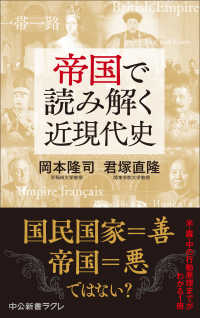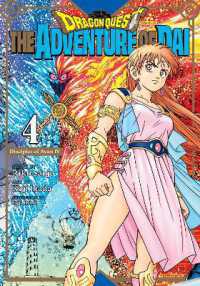基本説明
ベストセラーの12年振りの改版。旧版の邦訳『医療倫理の夜明け:臓器移植・延命治療・死ぬ権利をめぐって』(酒井忠昭監訳・2000年・晶文社)。
The author has added a new epilogue on more recent changes in the practice of medicine and on responses to his portrayal of the earlier, epochal changes that are the subject of the book.
Full Description
David Rothman gives us a brilliant, finely etched study of medical practice today. Beginning in the mid-1960s, the practice of medicine in the United States underwent a most remarkable--and thoroughly controversial--transformation. The discretion that the profession once enjoyed has been increasingly circumscribed, and now an almost bewildering number of parties and procedures participate in medical decision making.
Well into the post-World War II period, decisions at the bedside were the almost exclusive concern of the individual physician, even when they raised fundamental ethical and social issues. It was mainly doctors who wrote and read about the morality of withholding a course of antibiotics and letting pneumonia serve as the old man's best friend, of considering a newborn with grave birth defects a "stillbirth" thus sparing the parents the agony of choice and the burden of care, of experimenting on the institutionalized the retarded to learn more about hepatitis, or of giving one patient and not another access to the iron lung when the machine was in short supply. Moreover, it was usually the individual physician who decided these matters without formal discussions with patients, their families, or even with colleagues, and certainly without drawing the attention of journalists, judges, or professional philosophers.
The impact of the invasion of outsiders into medical decision-making, most generally framed, was to make the invisible visible. Outsiders to medicine--that is, lawyers, judges, legislators, and academics--have penetrated its every nook and cranny, in the process giving medicine exceptional prominence on the public agenda and making it the subject of popular discourse. The glare of the spotlight transformed medical decision making, shaping not merely the external conditions under which medicine would be practiced (something that the state, through the regulation of licensure, had always done), but the very substance of medical practice--the decisions that physicians made at the bedside.
Contents
Acknowledgments, Introduction: Making the Invisible Visible, 1. The Nobility of the Material, 2. Research at War, 3. The Guilded Age of Research, 4. The Doctor as Whistle-Blower, 5. New Rules for the Laboratory, 6. Bedside Ethics, 7. The Doctor as Stranger, 8. Life Through Death, 9. Commissioning Ethics, 10. No One to Trust, 11. New Rules for the Bedside, Epilogue: The Price of Success, Afterword, Appendix A, Notes, Index








